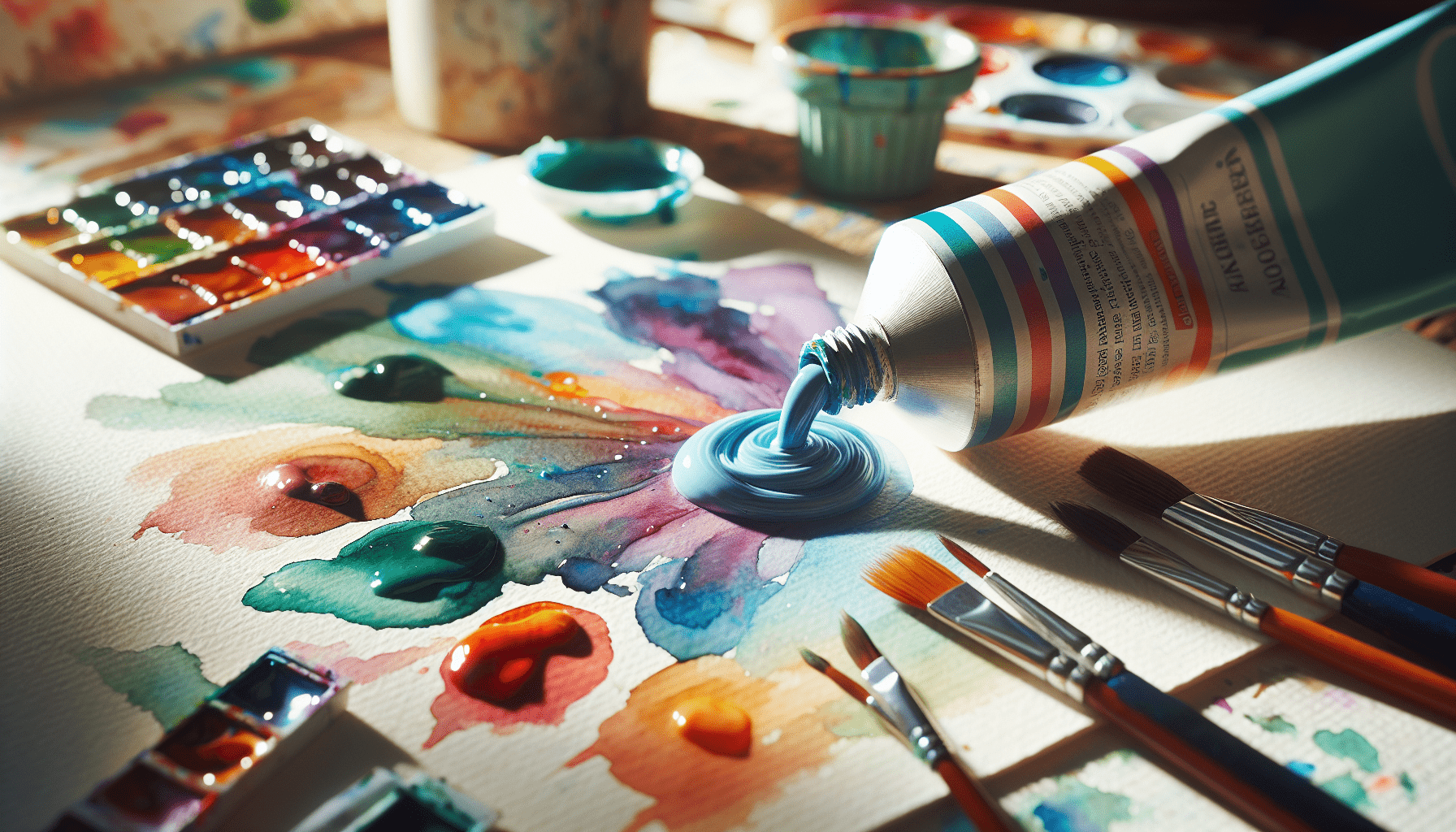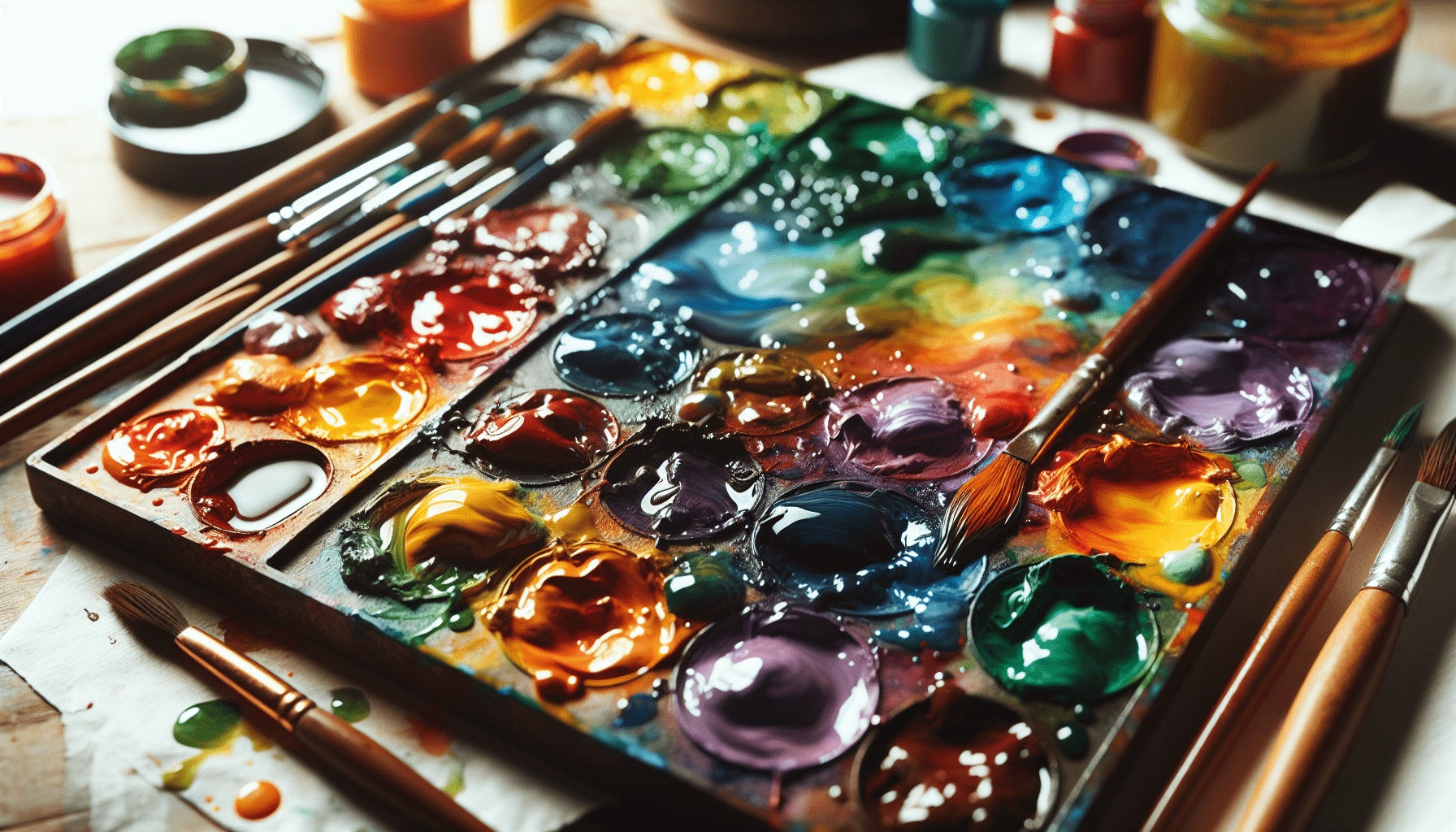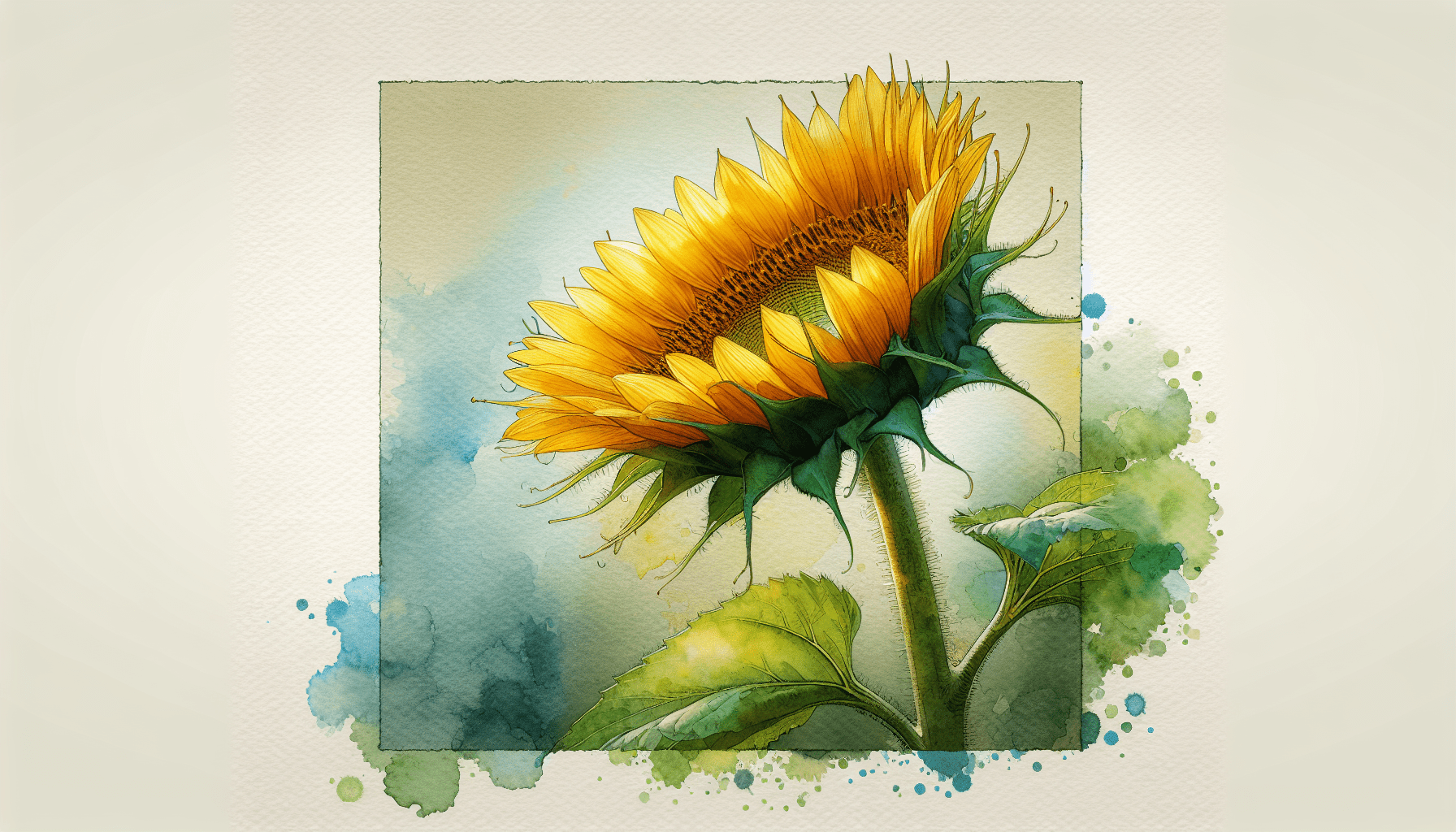In “How Do You Use Watercolor Paint In A Tube,” you will discover the essential techniques and steps to effectively utilize watercolor paints packaged in tubes, enhancing your artistic endeavors. This informative guide covers everything from selecting the right supplies to expertly mixing colors and applying them to your canvas. By following these structured instructions, you will gain confidence in your artistic abilities and produce vibrant, expressive works. Whether you are a beginner or looking to refine your skills, this article provides valuable insights to advance your watercolor painting proficiency. Have you ever wondered how to use watercolor paint in a tube to create stunning artworks? Whether you are a novice embarking on your artistic journey or an experienced artist exploring new mediums, understanding how to effectively use watercolor paint in a tube can elevate your artwork to new heights.
Watercolor paints in tubes are versatile, portable, and can be incredibly vibrant, offering a range of possibilities for artists. This guide will walk you through the essentials, providing you with the knowledge and confidence needed to make the most out of your watercolor tubes.
Introduction to Watercolor Paints in Tubes
Watercolor paints in tubes are concentrated, water-soluble pigments. The pigments are suspended in a binder, usually gum arabic, which helps the paint adhere to the paper. Tube watercolors are convenient because you can squeeze out only the amount you need, allowing for greater control over the intensity and depth of color.
Advantages of Using Watercolor Paints in Tubes
Using watercolor paints in tubes has several benefits:
- Intensity and Versatility: Watercolor tubes offer more intense and vibrant colors compared to pans, due to their higher pigment concentration.
- Convenience: The paint is already wet, making it convenient to use right away, especially for large washes or broad strokes.
- Customization: You can mix colors directly on your palette or even in the tube cap for unique shades and hues.
Disadvantages to Consider
While tube watercolors have numerous benefits, there are a few disadvantages to keep in mind:
- Drying Out: If not properly sealed, the paint can dry out in the tube, making it difficult to use.
- Wastage: Squeezing out too much paint might result in wastage, especially if you are not accustomed to using tube watercolors.
Getting Started with Watercolor Paint Tubes
Having the right materials is crucial for your success with watercolor paint tubes. Here’s a list of essential items you will need:
| Item | Description |
|---|---|
| Watercolor Paint Tubes | Choose high-quality paint tubes for better pigment and longevity. |
| Palette | A mixing palette with multiple wells for blending colors. |
| Brushes | High-quality watercolor brushes in various sizes. |
| Water Containers | At least two containers; one for clean water, and one for rinsing brushes. |
| Paper | High-quality watercolor paper that can handle multiple washes without warping. |
| Tissues or Rags | For blotting and correcting mistakes. |
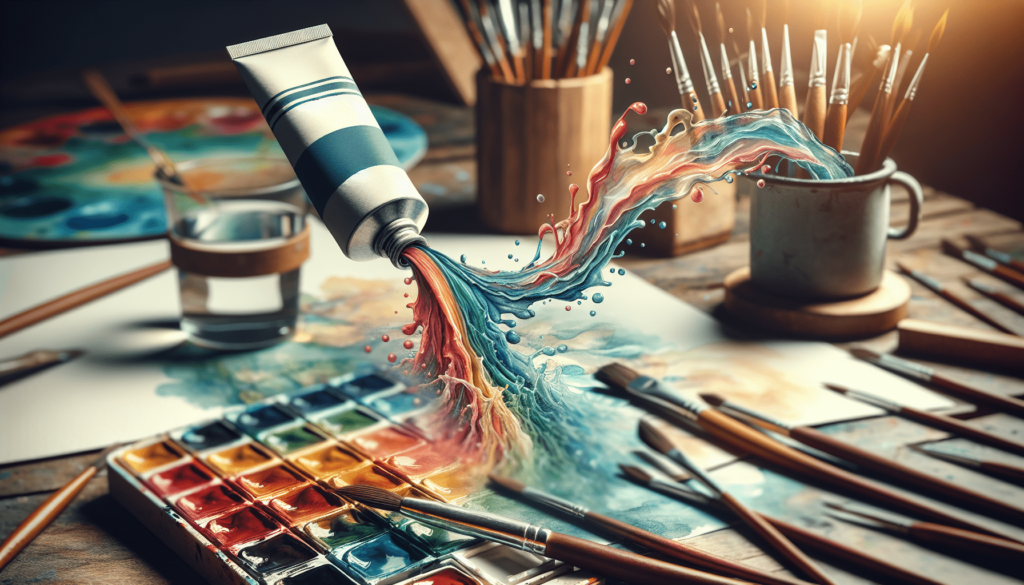
Preparing Your Workspace
A well-prepared workspace can significantly enhance your painting experience and ensure you make the most of your watercolor tubes.
- Clean Surface: Ensure your painting area is clean and free of dust.
- Organize Materials: Arrange your materials within easy reach to avoid disrupting your workflow.
- Adequate Lighting: Good lighting is essential to see the true colors and details of your work.
- Water and Palette: Fill your water containers and place your palette nearby. Squeeze small amounts of paint from the tubes onto your palette.
Techniques for Using Watercolor Paint Tubes
Squeezing and Mixing Paint
Squeezing the right amount of paint onto your palette is fundamental. A pea-sized amount is a good starting point for beginners, and you can always add more if needed.
- Gently squeeze the tube to avoid excess paint.
- Use the back of the tube cap to help control the amount if necessary.
- Mix the paint with water according to the desired consistency.
Mixing Colors
Mixing colors effectively can open a world of new shades. Use a palette to combine different colors, starting with small amounts to avoid wastage.
- Use a damp brush to pick up the paint from the tube.
- Transfer the paint to the palette’s mixing area.
- Gradually add water to achieve the desired consistency.
- Experiment with different color combinations to discover unique hues.
Consistencies of Paint
Watercolor from tubes can be thinned with water to achieve various consistencies. Here are a few:
| Consistency | Description |
|---|---|
| Opaque | Little water; thick paint, minimal transparency. Great for bold, dramatic strokes. |
| Semi-Opaque | Balanced mix of water and paint, resulting in moderately transparent layers. |
| Transparent | High water content; light washes. Ideal for layering and achieving delicate gradients. |
Applying Paint on Paper
Applying your watercolor paint effectively can profoundly affect the outcome of your artwork.
- Wet-On-Wet Technique: Wetting the paper before applying paint. This technique is perfect for creating soft edges and smooth color transitions.
- Wet-On-Dry Technique: Applying wet paint to dry paper for more defined edges and detailed work.
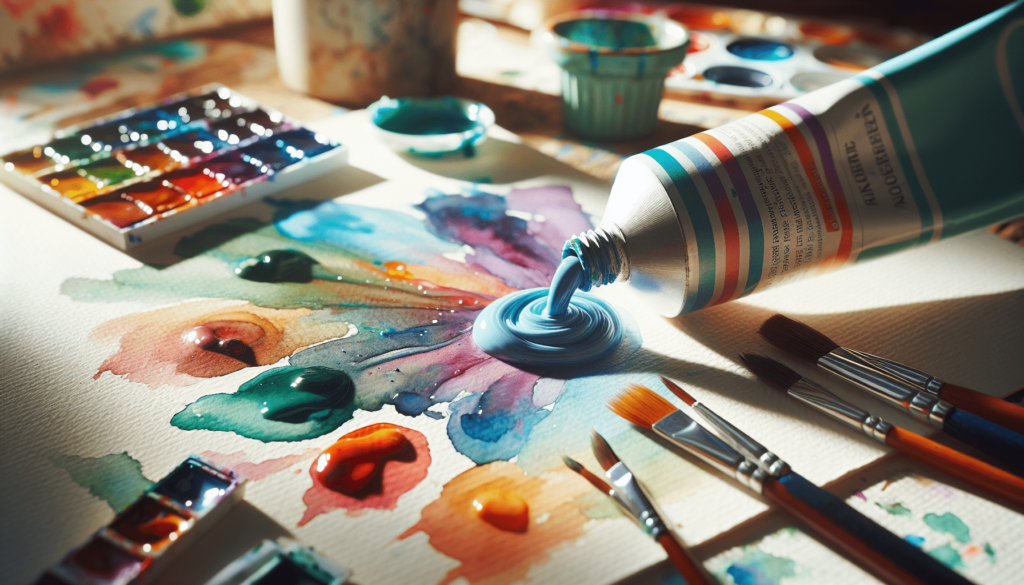
Techniques for Advanced Usage
Layering and Glazing
Layering is essential for adding depth and richness to your watercolor paintings. By applying multiple transparent washes over each other, you can create intricate textures and hues.
- Allow each layer to dry completely before adding the next to prevent muddying colors.
- Use lighter colors first and then build up to darker shades.
- Experiment with glazing to achieve luminous and rich colors.
Lifting and Correcting techniques
Mistakes are part of the creative process. Here’s how to correct them:
- Lifting: Use a damp brush or a tissue to lift off unwanted paint from the paper while it’s still wet.
- Scraping: If the paint has dried, a small palette knife or a razor blade can gently scrape off the area.
- Gouache: Use white gouache to paint over mistakes; it can be an effective corrective medium.
Avoiding Common Mistakes
Even experienced artists can fall into specific pitfalls while using watercolor paint in tubes. Here are a few common mistakes and how to avoid them:
- Overmixing: Continually mixing colors can lead to muddy, uninspired results. Practice restraint in color mixing.
- Overworking: Continually reworking an area can break down paper fibers and cause unwanted textures. Allow sections to dry before revisiting.
- Ignorance of Paper Quality: Poor quality paper will not hold up to multiple washes and can lead to warping. Invest in high-quality paper.
Cleanup and Preservation
Proper cleanup and preservation ensure the longevity of your materials and promote a healthy workspace.
- Cleaning Brushes: Rinse brushes thoroughly in clean water and reshape the bristles before storing.
- Sealing Paint Tubes: Ensure lids are tightly secured to prevent the paint from drying out.
- Storing Artwork: Store your completed work in a dry, flat place to maintain its integrity.
Storing Tubes
Proper storage of watercolor tubes can prolong their usability:
| Method | Description |
|---|---|
| Cool and Dry Place | Store tubes in a cool, dry place away from direct sunlight. |
| Airtight Container | Use an airtight container to prevent exposure to air and subsequent drying. |
| Vertical Arrangement | Arrange tubes vertically to prevent leakage and ensure easy identification. |
Health and Safety Considerations
While watercolors are generally safe to use, there are still health and safety considerations to keep in mind:
- Avoid skin contact with the paint to prevent potential allergic reactions.
- Work in a well-ventilated area to avoid inhaling any fumes from the paint, although minimal.
- Keep your art supplies out of reach of children and pets.
Developing Your Artistic Voice
Using watercolor tubes effectively is not only about techniques and materials; it’s about finding your artistic voice. Here are some tips to help you on that journey:
- Experimentation: Try different styles and techniques to discover what works best for you.
- Practice: Regular practice enhances your skill and increases your comfort with the medium.
- Study: Learn from other artists, but don’t be afraid to develop your unique style.
Conclusion
Understanding how to use watercolor paints in a tube can vastly improve the quality and versatility of your work. From the basics of squeezing and mixing paint to advanced techniques like layering and glazing, this guide aims to equip you with the knowledge and confidence necessary to explore your creativity fully. Remember, practice and patience are key in mastering any artistic medium.
So, pick up those tubes, prepare your workspace, and let your creativity flow. Happy painting!
By following this comprehensive guide, you’ll be well on your way to mastering watercolor paint in a tube, enabling you to create beautiful, expressive works of art with confidence and ease.
